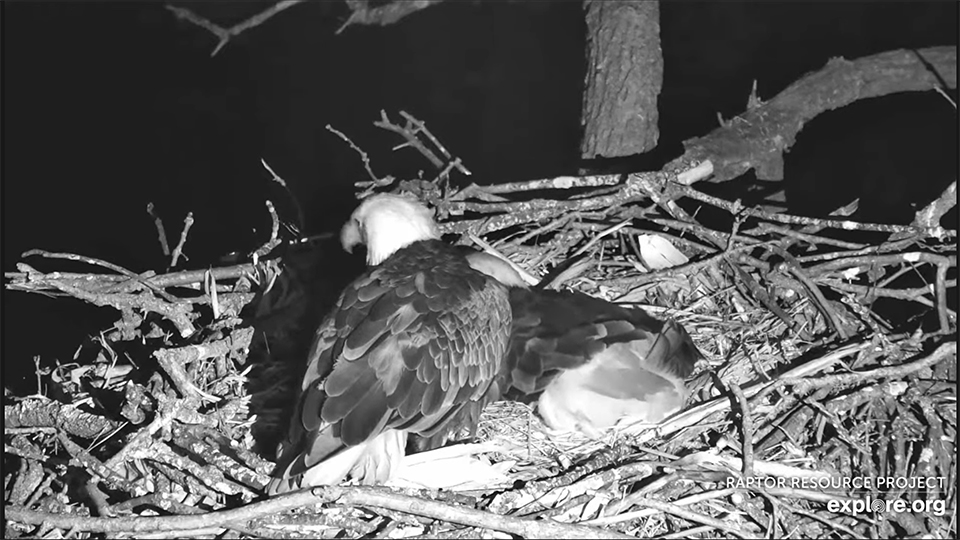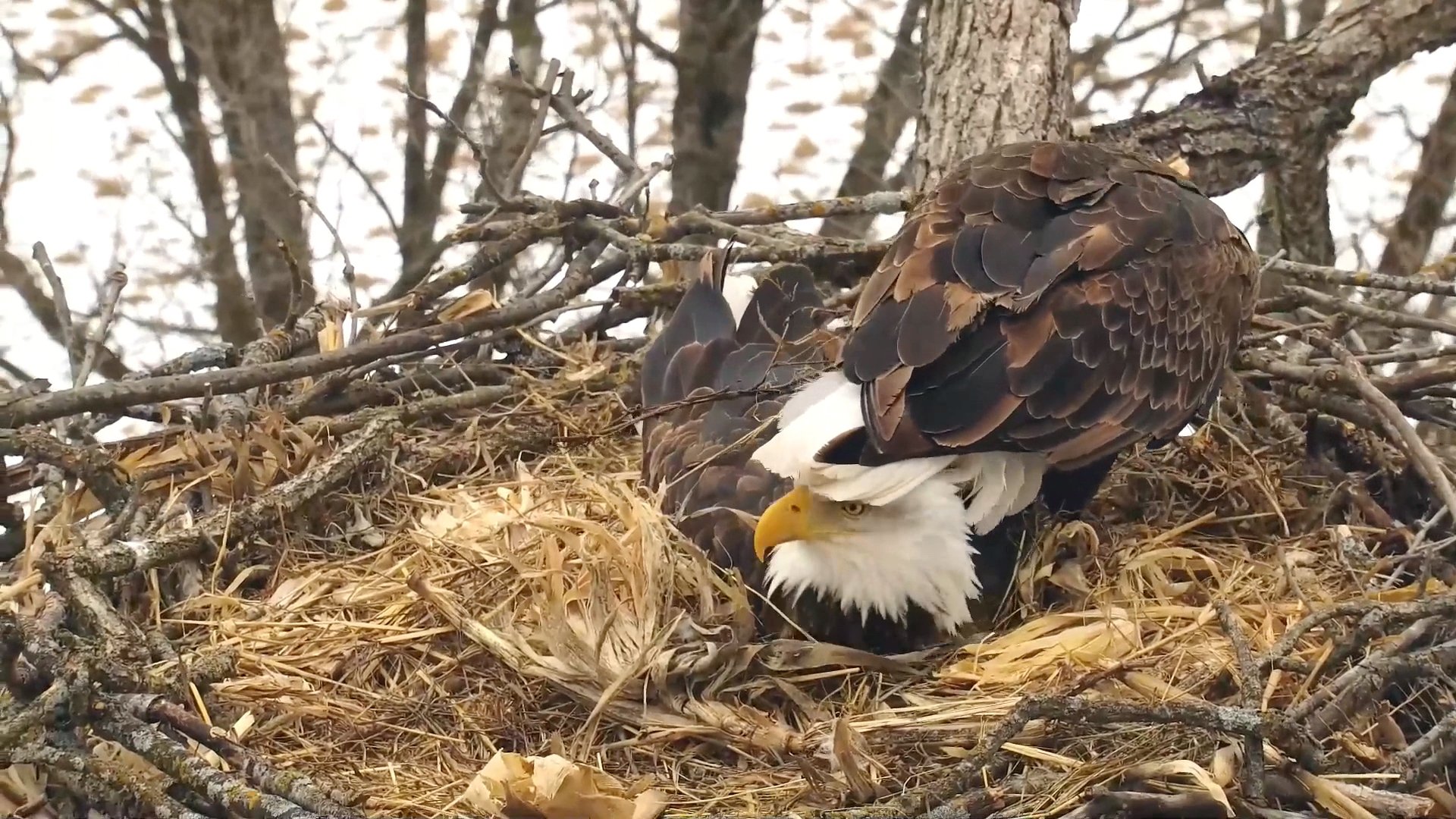Please join us for our first egg fundraiser on Wednesday, February 23rd at https://www.raptorresource.org/birdcams/decorah-north-nest/! Celebratory chats will take place from 8:30am to 10:30am, 1:00 to 3pm, and 5:30pm to 7:30pm, nest (central) time. We’re celebrating two eggs at the North nest and could be celebrating eggs at Xcel Energy’s Fort St. Vrain nest: Ma and Pa Jr. have been spending a lot of time on the nest this afternoon, the Fort St. Vrain eagle group is on egg watch, and Ma looks ready to lay eggs any minute now. Is there anything you want to ask us about? Get your questions ready!
I loved all of these videos, but I especially enjoyed the interesting and unusual 1:50AM incubation switch-off, the coyote chorus (it gave me the chills!), and the close-ups of both eagles. Thanks so much to our camera operators and video makers for finding and sharing such special, intimate moments with us!
Decorah North Eagles

January 21, 2022: 1:50am incubation switch at the North nest
February 21, 2022: 1:50am, Mr. takes a rare night shift – https://youtu.be/oXmuzwhoQ-E. This is extremely unusual. Female eagles usually incubate overnight: their larger body size makes it easier for them to tolerate long shifts in cold weather, and tends to mean that they get the shifts they want. We were all surprised when Mr. North flew in at around 1am and approached DNF to take a shift. She vocalized, the two peered into the darkness, and she got off the eggs, stretched, and gave him a turn. The two vocalized together, perhaps issuing a warning, before he took his shift.
DNF perched on the Love Branch until a little after 5:30 am. She started preening, evacuated, did some spectacular morning eagle yoga, and duetted with Mr. North. She flew into the nest and traded places at about 5:33. Why did they switch to begin with? As I recall, we’ve only seen a male eagle incubate through the night one other time (Dad Decorah, back in 2016) and we’ve never seen a late night switch like this that I remember.
Here’s the timeline: Something up above DNF caught her attention at about 1:22 AM, and coyotes started sounding at 1:22:25 AM (I thought it was a siren at first – video here and turn the audio down if it’s turned up: https://youtu.be/if9xWeqG_5k). DNF eventually fell back to sleep and appeared to slumber normally, although she looked up once or twice not long after a local dog barked. She woke again at 1:42 AM and looked out into the darkness, although she didn’t assume a defensive posture or call for Mr. North. We hear a sound like something landed nearby at about 1:46 AM, but she doesn’t appear to respond to it. Mr. North flies in at 1:47 AM and vocalizes. She hops up the branch at 1:49 AM and we hear her vocalizing before she flies out.

February 21, 2022: North Nestoration Follies!
February 20, 2022: Extreme close-ups of Mr. North – https://youtu.be/MJ9qywFDeX0. Extreme close-ups begin around 3:42, with a spectacular look at his feathers! We see neatly stacked tailfeathers, contour feathers, adult down, primary feathers, the point at which Mr. North’s feathers turn from brown to white (this happens in individual feathers), and Mr. North’s face. An incredible portrait of an incredible eagle!
February 20, 2022: 5:30 pm DNF close-ups, afternoon delight, Mr. back to incubating – https://youtu.be/VcsBFK_LY74. The video opens with beautiful close-ups of beautiful DNF, who is sitting alertly on her eggs. She begins vocalizing at around 2:24 and stands up at 2:43 as an eagle flies by in the background. She flies out to join Mr. North on the Love Branch for a little afternoon delight (listen to their duets before and afterwards). Mr. North flies in for his turn on the eggs at 5:21. Check out the great close-up of him gently holding his feet and carefully rolling the eggs beneath him.
Researchers Ed Walsh and JoAnn McGee conducted a study of bald eagle vocalizations at both Decorah nests and compared them with the calls of captive eagles. They concluded that calls are more complex in free-ranging eagles than in captivity, most likely due to the variety of conspecific behavioral interactions, including food delivery to the nest, mating, contacting the mate (and possibly the eaglets), and protecting the eggs/eaglets from intruders. While eagles aren’t known for the incredible variety of sounds they make, they use what they have in a wide variety of contexts. Another research study by the Max Planck Institute for Ornithology found that the brains of white-browed sparrow-weavers synchronize when they sing duets. Bald eagles are pretty different birds; still, I have to wonder if the same thing is happening here.
 The Raptor Resource Project
The Raptor Resource Project The Raptor Resource Project
The Raptor Resource Project